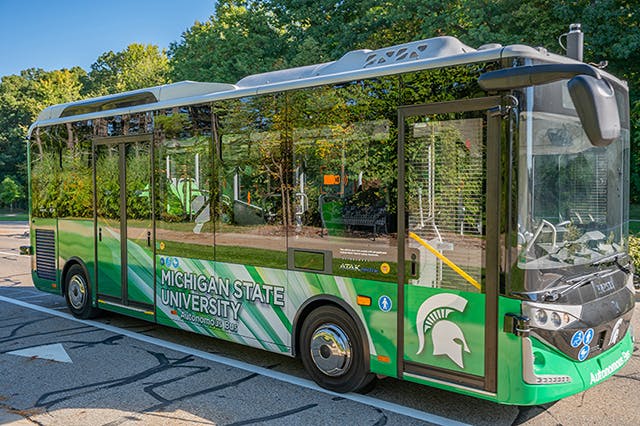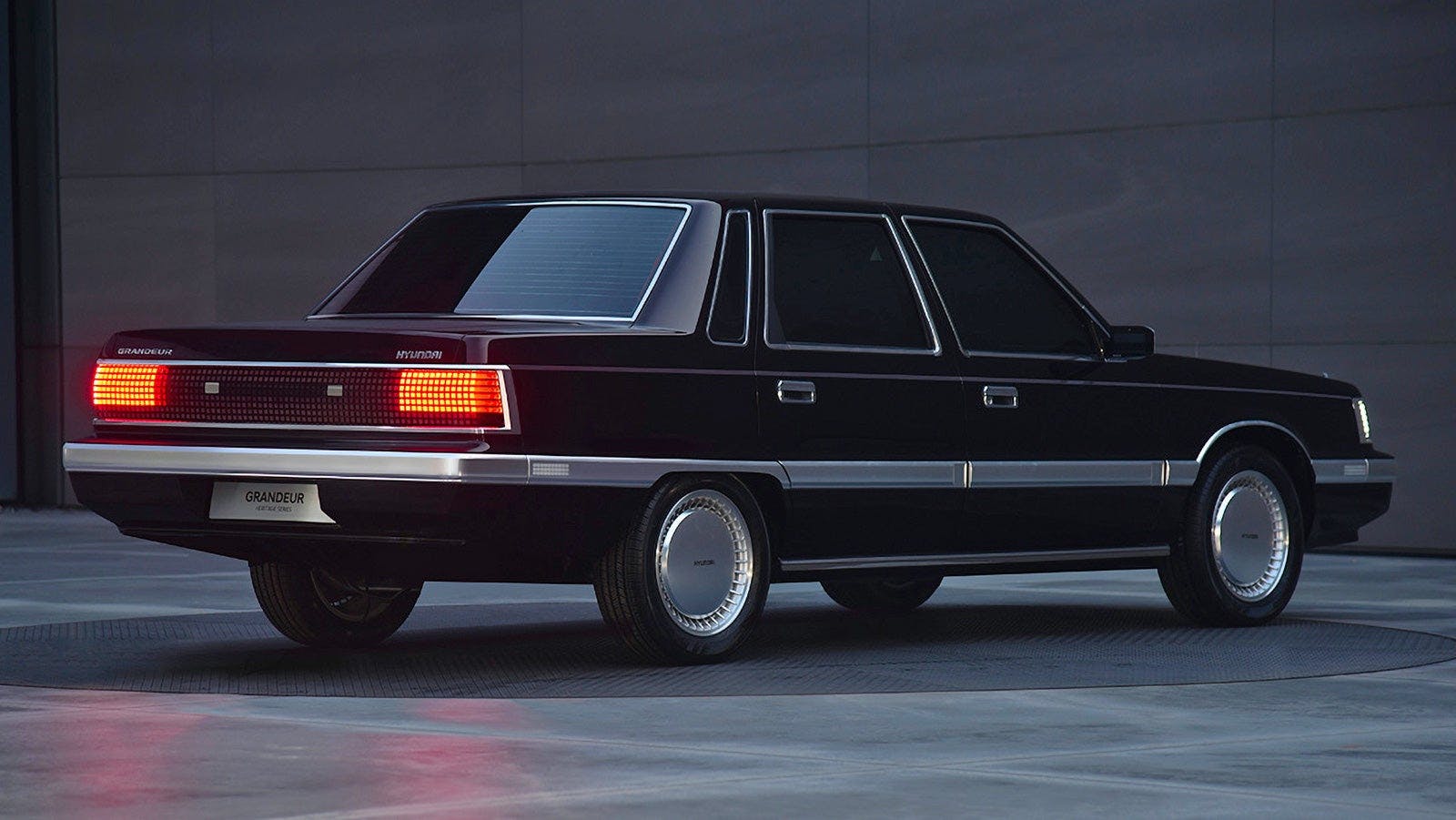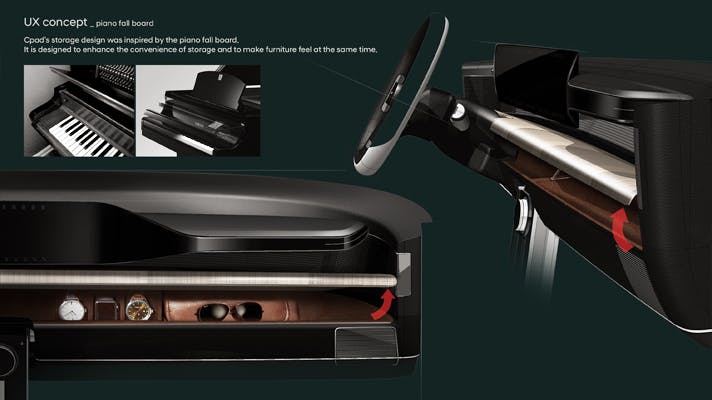Corvette Z06’s lead engineer talks LT6 with Leno, MSU’s “autonobus,” Hyundai brings (back) the Grandeur
How revvy is the LT6? Z06 engineer lays it out on Leno’s show
Intake: In the latest episode of Jay Leno’s Garage, our man Jay finds himself in a rather enviable position—the driver’s seat of the 2023 Corvette Z06. In a conversation with Aaron Link, lead development engineer for the Z06, Jay discusses the intricacies of a car that promises exotic-challenging performance at a fraction of the price. Soon after, the pair are on the road, geeking out over this 670-horse flat-plane-crank brute. The pride in Jay’s voice as he’s talking about the American-ness of this car is palpable—and entirely appropriate. Chevy’s given Jay time in a well-optioned example, too: This car has the Z07 package, which includes the massive carbon-ceramic brakes, as well as those delicious carbon-fiber wheels.
Exhaust: We don’t simply get an opportunity to drool over the first-ever mid-engine Z06 … we learn a bit, too. Link says that during aggressive driving on a road course, the Z06’s average engine speed is roughly 6700 rpm—higher than the average redline of most small-blocks. Mind = blown.
Rivian’s IPO ready to hit the street: Wall Street

Intake: Rivian shares are preparing to hit the public market today, November 10th, under ticker RIVN on the Nasdaq. Riding a recent wave of enthusiasm for EV investment, 135 million shares will be offered at 78 dollars each, making this IPO one of the largest in the U.S. in nearly a decade. Expectations are, Rivian will achieve a 70-billion-dollar valuation by going public today, easily doubling its most recent valuation of 27.6 billion as a private enterprise. The EV truck producer’s goals are still on track. The company has been preparing to make good on 1200 vehicles by this year’s end, and 150,000 of them annually, by the end of 2023.
Exhaust: Rivian has quietly built up a strong reputation in the EV space for focusing on concrete results over flashy promises. This process has led it to accrue an impressive resume of private funds and partners. Pursuing a traditional IPO remains in lockstep with its identity as a company and stands as mature counterpoint to the splashy SPAC options that many EV makers have chosen when going public. In a David vs. Goliath scenario, Rivian is solidifying its position as the aptest challenger to Tesla’s trillion-dollar behemoth.
Full electrification unlikely for Nissan’s next GT-R

Intake: Nissan CEO Makoto Uchiuda isn’t set on making the brand’s halo car all-electric. Speaking to Autocar, he stated that the next GT-R must be “the fastest super-sports car in the world,” and that a new platform is in the works. However, Nissan’s bossman stopped short of promising a battery-powered drivetrain: “It has to own the track. And it has to play the advanced technology game. But that doesn’t mean it has to be electric.” Our money’s on a hybrid V-6 with some sort of forced-induction setup.
Exhaust: A hybrid Gozilla … heresy? True, the GT-R has always been about the engine—but, on the other hand, each GT-R has always been at the cutting edge of technology. The R32 had AWD and four-wheel steering at a time when AWD was extremely uncommon on street cars. The R34 had a Multi Function Display nearly a decade before infotainment setups became standard. A hybrid driveline would ensure the R36 GT-R stays true to its ICE roots and to its forward-looking tradition.
Michigan State University introduces electric autonomous bus

Intake: Michigan State University has introduced an electric autonomous bus as part of the college’s “smart mobility ecosystem.” The 22-seat Karsan Autonomous e-ATAK bus (built by Karsan and automated by ADASTEC) will serve students, staff, and faculty beginning early 2022. The bus will follow a 2.5-mile route, with boarding and departure from two stations. To make the e-ATAK’s non-stop route possible, all traffic lights along the way will be controlled through intelligent roadside units and will communicate with the bus to improve its safety. As a precaution, a driver will be onboard, prepared to take control of the operating system if necessary.
Exhaust: Michigan State’s Autonomous e-ATAK provides bus manufacturers a real-world environment in which to test and tweak this new technology, and it also offers MSU students valuable skills in the expanding world of eco-friendly and autonomous vehicles. Go Green! Literally.
A London Grand Prix could be on the calendar by 2024

Intake: London’s Royal Docks could soon stage a Formula 1 race if plans by U.S. investment firm 777 Partners come to fruition. The race would complement the historic Silverstone Grand Prix and bring F1 racing to the streets of the capital before the end of 2024. “There will be an electric atmosphere as the greatest athletes in the world, along with an international fanbase and the world’s largest companies as sponsors, descend on the Docks for race weekend. More importantly, we will build a world-class sports and entertainment complex that can serve the community year-round and revitalise the surrounding areas. It is the type of thing you really can’t quantify until it actually happens, but the impact is dramatic,” Josh Wander, founder of 777 Partners tells The Daily Mail. No details of the track layout have been revealed, but the Docklands location is already far more practical than previous layouts that routed cars past Buckingham Palace and Trafalgar Square.
Exhaust: The plan is said to have the full support of London’s Mayor Sadiq Khan, despite his push to reduce vehicle emissions in the city by introducing an ultra-low-emissions zone. Will Formula 1 have to pay the $17-per-car-per-day ULEZ charges, though? Probably not.
Hyundai brings back Grandeur, literally and figuratively
Intake: In a stunning display of pride in its heritage, Hyundai made a Grandeur restomod for the model’s 35th Anniversary. This, after making the modern-day Pony, is a mind-blowing combination of electric propulsion, modernization of classic interior (one-spoke wheel) and exterior (alloy wheels designed like disc hubcaps) themes. It’s all wrapped up with two delightful tricks: Hyundai’s new, pixelated light design and an interior ambiance worthy of the finest lounges of the late-disco era.
Exhaust: Things weren’t so great for South Korea in 1986 when Hyundai rebadged Mitsubishi’s Debonair sedan and made it their Grandeur flagship. But the authoritarian government made way for a true democracy in 1987, and those good vibes likely make an impression on every citizen, including today’s Hyundai employees. No matter the influences, the restomod Grandeur is an amazing look forward with an honest reflection of East Asian luxury themes of the 1980s, as it avoids cliche throwbacks like Memphis design or “rad” worthy graphics. Wouldn’t it be great if Lincoln restomodded a 1961 Continental, or Cadillac a 1967 Eldorado, with the same level of passion and precision?
New shoulder-camera view for MotoGP puts viewers right in the action

Intake: MotoGP is motorsport distilled to daredevil minimalism, which makes capturing footage for television coverage uniquely difficult. There have been on-bike cameras for years, but now the MotoGP team has figured out how to safely body-mount a camera in the left shoulder of a rider’s leathers. Alex Rins was the first to try the system out during the Algarve GP, and the footage highlights just how much body movement these riders are doing over the course of a lap.
Exhaust: From the living-room couch, this seems like a simple change, but anyone familiar with a motorsports rulebook knows why this is tough. Helmet-mounted cameras are cumbersome—even with modern technology—and illegal in all but the loosest motorcycle racing or track-day organizations. Front- or rear-facing cameras accurately record on-track action, but those angles rarely captured just how physical this sport is. We also gain an interesting look at the rider’s left hand, which is tasked with a multitude of functions from electronics settings adjustment to a thumb-controlled rear-brake.
2022 VW Jetta and GLI get minor upgrades, similar bargain prices

Intake: From the outside, you might not be able to tell that VW’s changed anything about the 2022 Jetta or GLI, but the updated spec sheets and the recently announced base MSRPs reveal that the 2022 car is an even better value than its 2021 predecessor. The base, S trim, which comes standard with a six-speed manual transmission, gets a handful of snazzy upgrades previously reserved for mid- to high-level trims: LED headlights and an 8-inch digital instrument cluster are now standard. Under the hood sits an updated engine that now makes 11 more hp than the outgoing model. The best news: You’ll only pay $1200 extra for these goodies. Hop over to GLI land, and price differences from 2022 to 2021 are even smaller—$250. The story there, however, is a bit different than with the plain-Jane Jetta: VW’s only offering the 2022 GLI in a single trim (Autobahn, a carry-over from 2021), and it hasn’t done much more than tweak the front and rear fascias and fiddle with the exhaust note.
Exhaust: Even as it rolls out electric SUVs like the ID.4 and preps the Microbus’ battery-powered reboot, VW is for now remaining dedicated to at least one small car. Customers on a tight budget who remain wary of EVs will find much to like in the refreshed Jetta and GLI, but we still wish there was a base Golf in the North American market.


















